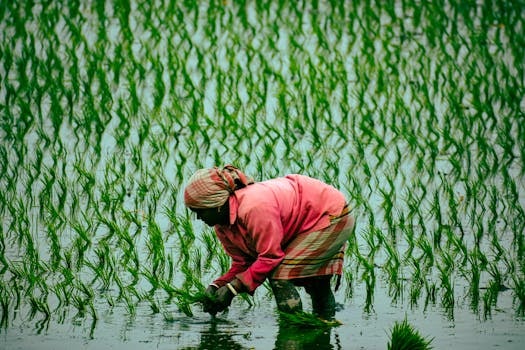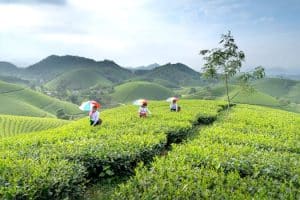Traditional Rice Farming: Paddy Field Experiences
Traditional rice farming, also known as paddy field farming, has been a way of life for many communities for centuries. This method of farming involves growing rice in flooded fields, providing a unique and picturesque landscape. There is more to traditional rice farming than just the final product of rice. It is an experience that has been passed down for generations and continues to be an integral part of many cultures. In this article, we will delve into the world of traditional rice farming and explore the experiences of working in a paddy field.
The Origin of Traditional Rice Farming
The history of traditional rice farming is shrouded in mystery, as there are several different theories about its origin. Some believe that rice cultivation began in China and spread to other parts of the world, while others argue that it originated in India or Southeast Asia. Regardless of its origins, traditional rice farming has become a vital part of many cultures and is still prevalent in many countries.
The Process of Traditional Rice Farming
The process of traditional rice farming involves several stages, starting with land preparation. Farmers carefully plow and level the fields to ensure they are suitable for rice cultivation. The next step is to fill the fields with water; this process is known as “flooding.” Flooding helps to control weeds and pests and acts as a fertilizer, as the decomposition of organic matter in the water provides nutrients for the rice plants.
Once the fields are flooded, the seeds are planted either by hand or using a tool called a seed drill. The growing of rice requires a significant amount of water, which is why traditional rice farming is usually done in areas with high rainfall or near a water source. After a few months, the rice plants start to grow, and the farmers continuously monitor and maintain the fields to ensure a successful harvest.
The Experiences of Working in a Paddy Field
The most striking aspect of traditional rice farming is the physical work involved. Farmers must work tirelessly in the scorching sun, spend hours bending and squatting, and constantly wading through the muddy fields. It is a physically demanding job, but many farmers take pride in their hard work and dedication to their craft.
Besides the physical aspect, working in a paddy field is also a unique cultural experience. In many cultures, rice farming is a family affair, with every member playing a vital role in the process. It is a way for families to bond and pass down their knowledge from one generation to the next. The atmosphere in a paddy field is one of hard work, but also of joy, laughter, and connection with nature.
The Importance of Preserving Traditional Rice Farming
With the adoption of modern farming techniques, traditional rice farming is slowly diminishing in some parts of the world. However, it is essential to preserve this centuries-old practice for several reasons.
Firstly, traditional rice farming is sustainable and environmentally friendly. The flooded fields serve as a natural habitat for various plants and animals, making it an ecosystem in itself. Furthermore, the crops grown in such fields have a lower carbon footprint compared to those grown in conventional methods.
Secondly, traditional rice farming brings communities together and supports local economies. Farmers rely on each other’s support and knowledge, and the entire process provides jobs for many individuals, such as laborers, harvesters, and sellers.
In conclusion
Traditional rice farming is more than just a method of growing rice; it is an experience that has been passed down for generations. It is a way of life that connects individuals to their roots and each other. The physical and cultural experience of working in a paddy field is something that cannot be replaced by modern farming techniques. It is vital to preserve traditional rice farming for its sustainability, cultural significance, and community impact. So, the next time you enjoy a plate of rice, remember the hard work, history, and culture behind it.





